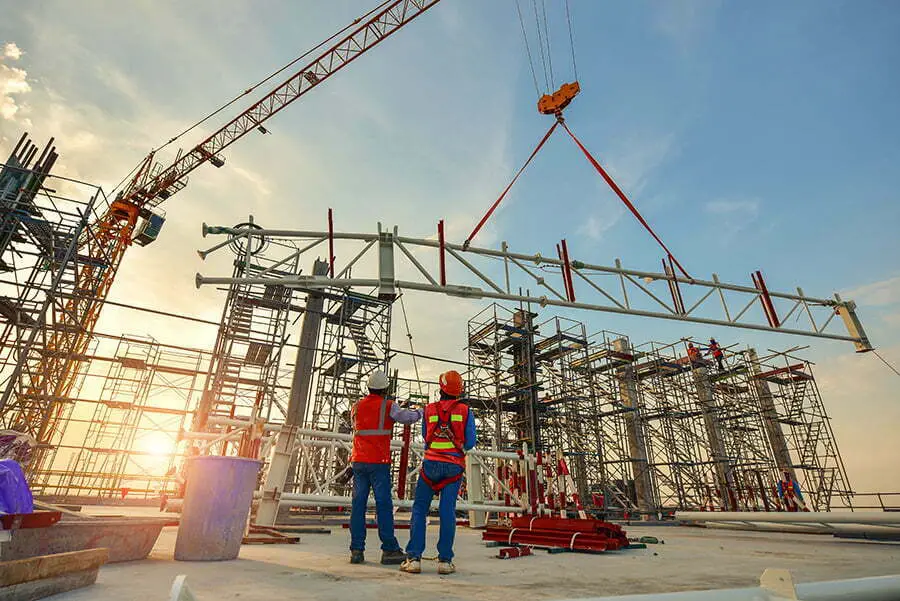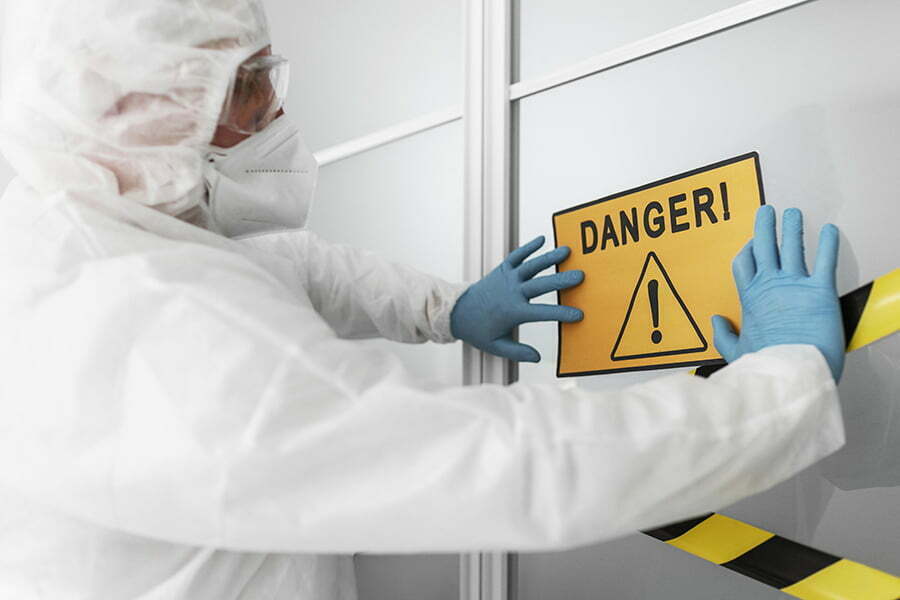The toxicity and off-gassing of polymers can significantly impact their use in building materials. They can cause health risks and environmental pollution if not properly managed.
Polymer materials are widely used in the construction industry due to their strength, durability, and cost-effectiveness. However, the toxicity and off-gassing of polymers can significantly impact their use in building materials.
This blog explores how the toxicity and off-gassing of polymers can affect their use in construction projects. We’ll also look at ways to minimize these effects and ensure that polymer materials are safe for building materials.
The toxicity and off-gassing of polymers can significantly negatively affect their use in building materials. The presence of hazardous chemicals can lead to health risks for those living or working in the area and have an environmental impact.
The release of volatile organic compounds (VOCs) from polymer materials may cause air pollution, leading to further health risks. As such, it is important to select polymers with low toxicity and VOC emissions when considering their use in building materials.
Key takeaways:
- Toxicity and off-gassing of polymers impact their use in building materials.
- Release of volatile organic compounds (VOCs) from polymers causes air pollution.
- Choose polymers with low toxicity and VOC emissions for building materials.
- Safer polymer-based materials have certifications like GREENGUARD or Cradle to Cradle (C2C).
- Proper ventilation and low-VOC alternatives help mitigate health risks.
Building Materials

Building materials are the components used to construct a structure, such as walls, floors, and roofs. They can be made from wood, metal, concrete, plastic, and glass.
Polymers are synthetic materials that have become increasingly popular in building construction due to their durability and cost-effectiveness. However, polymers can also release toxic chemicals into the air through off-gassing, which can be hazardous to human health if not properly managed.
Off-gassing occurs when volatile organic compounds (VOCs) are released from the polymer material into the air over time. These VOCs can cause respiratory irritation or other health problems if inhaled in large quantities over long periods.
Therefore, builders must consider toxicity and off-gassing when selecting polymer building materials for construction projects.
Toxicity

Toxicity measures how poisonous or harmful material can be to humans and other living organisms. In the context of polymers used in building materials, toxicity refers to the potential for these materials to cause harm when inhaled, ingested, or come into contact with skin.
This could include irritation and allergic reactions to more serious health effects like cancer. The toxicity of polymers used in building materials can vary greatly depending on their composition and how they are manufactured.
For example, some plastics may contain toxic chemicals that can leach out over time, while others may not have any hazardous components.
Builders and consumers need to understand the potential risks of using certain types of polymer-based building materials. This helps them make informed decisions about what products are safe for use in their homes or businesses.
Off-Gassing
Off-gassing releases volatile organic compounds (VOCs) from a material or product. VOCs are chemicals that can have negative health effects when inhaled, such as headaches, nausea, and respiratory irritation.
In building materials, off-gassing can occur when polymers are exposed to heat or sunlight. This process releases VOCs into the air, which can be breathed in by people living in the space.
Off-gassing from polymers building materials can also cause indoor air pollution and contribute to poor indoor air quality. It is important to consider the potential for off-gassing when selecting polymer building materials for construction projects, as it may affect occupant health and comfort levels over time.
Choosing Safer Polymer-Based Materials
When it comes to using polymers in building materials, choosing safer options is crucial. Some polymers may contain toxic substances or have a higher potential for off-gassing harmful chemicals.
To ensure the safety of occupants and minimize environmental impact, it is important to select polymer-based materials that meet stringent health and safety standards.
One way to identify safer polymer-based materials is by looking for certifications such as GREENGUARD or Cradle to Cradle (C2C). These certifications indicate that the product has undergone rigorous testing for chemical emissions and meets specific criteria related to indoor air quality.
Manufacturers are increasingly developing low-toxicity alternatives by substituting hazardous additives with less harmful ones. For example, phthalates – commonly used plasticizers – can be replaced with non-toxic alternatives like citrates or adipates.
Impact On Indoor Air Quality
When these materials off-gas, they release volatile organic compounds (VOCs) into the air. VOCs are chemicals that can easily evaporate at room temperature and contribute to poor indoor air quality.
Exposure to high levels of VOCs emitted by polymers can lead to various health issues such as eye, nose, and throat irritation, headaches, dizziness, allergic reactions, and even long-term respiratory problems. Some VOCs have been classified as carcinogens or potential carcinogens.
To mitigate the impact on indoor air quality caused by polymer off-gassing in construction materials like paints or adhesives containing polymers with high levels of VOC emissions should be avoided whenever possible. Instead opting for low-VOC or zero-VOC alternatives is recommended.
Proper ventilation is also crucial in minimizing exposure to harmful airborne pollutants from polymer-based building materials. Adequate airflow helps dilute the concentration of pollutants indoors and improves overall indoor air quality.
Health Implications of Polymer Off-gassing
Off-gassing refers to the release of volatile organic compounds (VOCs) from a material into the surrounding environment. These VOCs can include various chemicals that may have adverse effects on human health.
Exposure to high levels of VOCs emitted by polymers can lead to respiratory issues such as irritation, coughing, and difficulty breathing. Some individuals may also experience headaches, dizziness, or allergic reactions when exposed to these compounds.
Prolonged exposure or repeated inhalation of high levels of VOCs could potentially contribute to more serious long-term health problems.
It’s worth noting that not all polymers are created equal in terms of their off-gassing potential and associated health risks. Different types and formulations vary widely in their chemical composition and propensity for releasing harmful substances into indoor air.
To mitigate these risks, manufacturers are increasingly focusing on developing low-VOC or even zero-VOC polymer-based materials for construction purposes. These products undergo rigorous testing procedures aimed at reducing emissions without compromising performance characteristics.
Proper ventilation systems play a crucial role in minimizing exposure by diluting indoor air pollutants effectively. Adequate airflow helps remove any released VOCs from enclosed spaces like homes or offices where polymer-based building materials are used extensively.
Mitigation Strategies for Polymer Toxicity
One approach is to use alternative polymer formulations that are less toxic or non-toxic. This involves replacing harmful additives or using different types of polymers altogether.
Another strategy is to implement proper ventilation systems in buildings to minimize the concentration of off-gassed chemicals from polymers. Adequate airflow can help dilute and remove these substances, reducing their potential impact on indoor air quality.
Manufacturers can adopt stricter quality control measures and testing protocols to ensure that their polymer-based products meet safety standards and have minimal toxicity levels. This includes rigorous screening for hazardous substances during the production process.
Furthermore, educating architects, builders, and consumers about the potential risks associated with certain polymer-based materials is crucial. By raising awareness about safer alternatives and promoting responsible material selection practices, stakeholders can make informed decisions when choosing construction materials.
Regulatory Standards On Polymer Use in Construction
These standards ensure that the polymers used meet certain safety and performance criteria. Regulatory bodies such as government agencies or industry organizations set these standards to protect public health and safety.
One important aspect of regulatory standards is the limitation on toxic substances present in polymer-based construction materials. For example, regulations may restrict or ban certain chemicals known to be harmful from being used in polymer formulations for building products.
These regulations often specify acceptable levels of off-gassing from polymers during their lifespan within a building. Off-gassing refers to the release of volatile organic compounds (VOCs) into indoor air over time.
By setting limits on VOC emissions, regulators aim to maintain good indoor air quality and minimize potential health risks associated with exposure.
Compliance with regulatory standards is crucial for manufacturers producing polymer-based construction materials. They must ensure that their products meet all applicable requirements before they can be sold or installed for use in buildings.
By adhering to these regulations, both manufacturers and consumers can have confidence that any potential toxicity issues related to polymers are minimized or eliminated altogether when using them as part of construction projects.
FAQ
What is polymer toxicity?
Polymer toxicity refers to the potential harm caused by the release of harmful dust and vapors, including harmful monomers such as vinyl acetate, when polymers are cut, heated, or otherwise manipulated, which can affect the heart, nervous system, liver, reduce fertility in men, and potentially lead to cancer.
What are the negative effects of polymers?
The negative effects of polymers include potential environmental contamination through soil, water, air, and food due to the release of additives such as stabilizers and flame-retardants during disposal.
How do polymers degrade in the environment?
Polymers degrade in the environment primarily through photodegradation, thermal degradation, mechanical action, and biodegradation, processes which break them down into smaller, sometimes harmful, components.
Can polymers be engineered to reduce harm during construction?
Yes, polymers can be engineered to reduce harm during construction by improving workability, enhancing durability, reducing weight, and providing better insulation.
What are the alternatives to potentially hazardous construction polymers?
Alternatives to potentially hazardous construction polymers include bio-polymers, composed primarily of cellulose, starch, and proteins, and recyclable polymers like Polyvinyl Chloride (PVC) and High-Density Polyethylene (HDPE).
Recap




